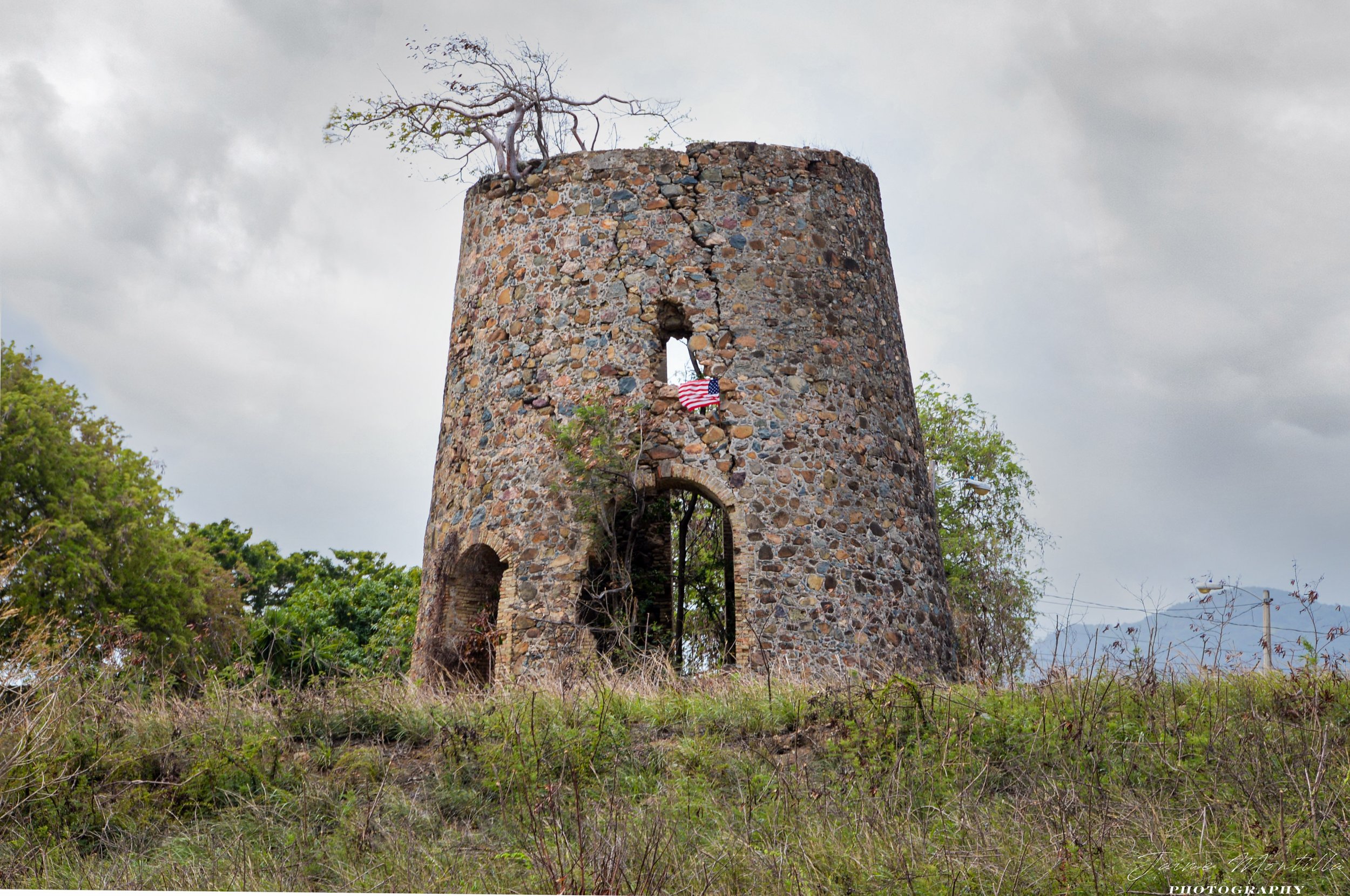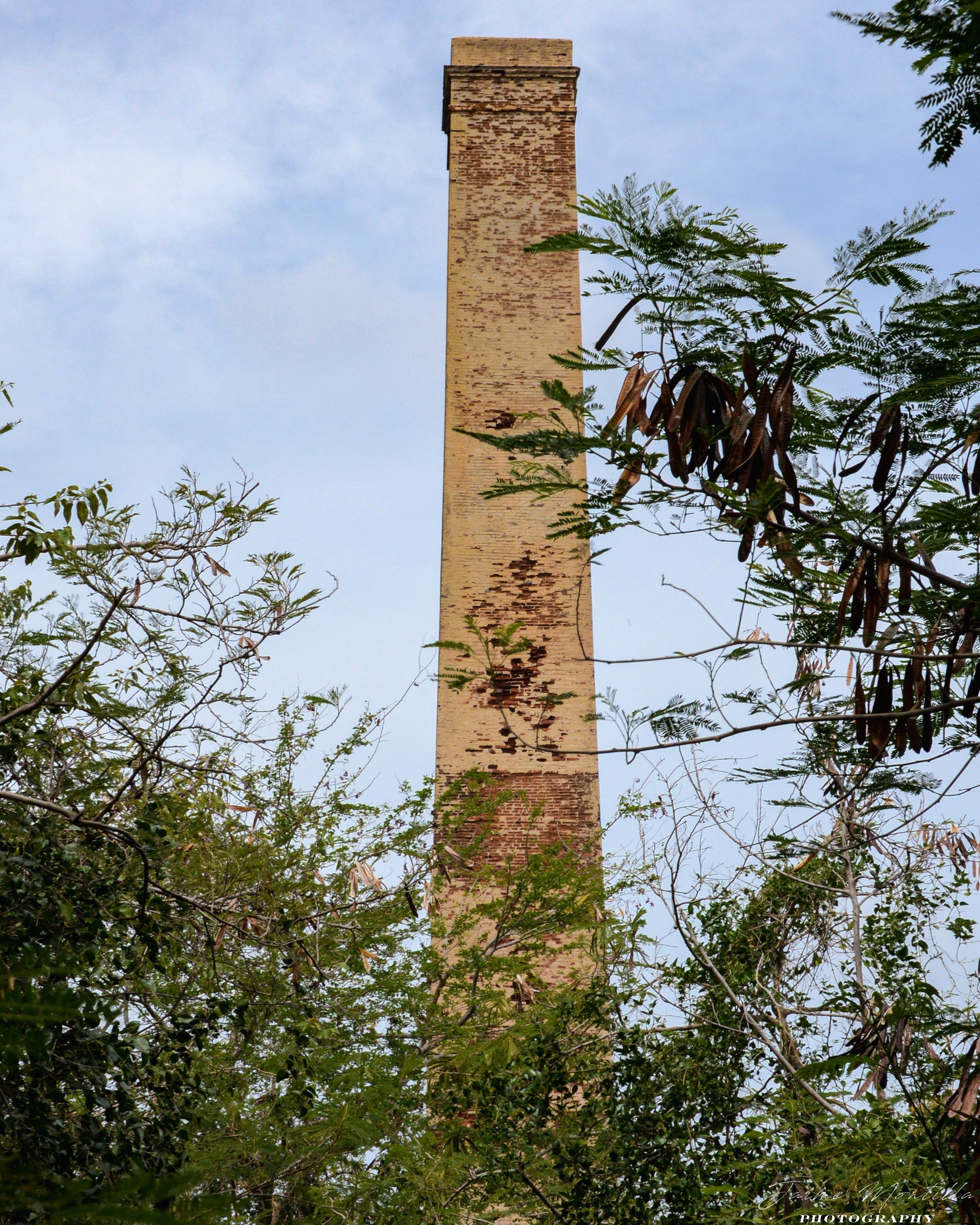
Hacienda Carlota
Louis Sainte-Claire Deville (1779-1825) was a French immigrant born in Saint Pierre, Martinique who arrived in Puerto Rico ca. 1819. He married Charlotte Duvivier de Fontenay (1786-1867) born in BasseTerre, Guadeloupe from which marriage Charles Sainte-Claire Deville Duvivier was born in 1814. He In his book Guayama: Hacendados, Estancieros y Comerciantes Extranjeros, Eli Oquendo states that on May 14, 1824 Luis Deville together with two other French immigrants claimed having established a sugar factory in Barrio Machete named La Carlota in honor of his wife.
In 1824 Hacienda Carlota consisted of approximately eighty three cuerdas, acquired for 7,000 pesos by the firm Rió, Deville & Cia. from French immigrant from Bordeaux Carlos Picar (1762-1839). Rió, Deville & Cia. was comprised of Frenchmen Louis Sainte-Claire Deville ( -1825), Luis Esteban Rió Pelagra ( -1833) a native of Nantes and Adriano Saubot Pillot ( -1829) from Bayonne. By 1826 its land holdings had expanded to three hundred seventy two cuerdas and by 1834 they acquired an additional eight hundred cuerdas from Ramón Aboy in Barrio Aguirre for 2,400 pesos. On September 21, 1826 the firm Rió, Deville & Cia. requested permission from the government to bring skilled labor from Saint Thomas to install a wind mill at their hacienda in Guayama. In 1827 the windmill which remains are pictured below, was imported from and installed by technicians from St. Thomas. The windmill was the first to be installed in the Guayama area and one of the first in Puerto Rico, installed the same year as that at Hacienda Santa Ana.
Benjamin Clauzel (1794-1866) was the son of Nicolas Sainte-Claire Clauzel (1748-1815) and Rose Hugonnenc (1756-1795). He left France for the US when eleven years old to continue his studies first in Baltimore, MD and then in Savannah, GA and then came to Puerto Rico to join his cousin Luis Deville in the management of Hacienda Carlota. In 1821 he married Marie Félicie de Boyrie in Guayama and in 1829 returned to live in Bordeaux. In 1830 and 1832, Benjamin acquired the Baylin estate in Lias d'Armagnac, France and the Château Citran in Médoc, France. Benjamin's son François Félix Clauzel de Boyrie (1821-1886) remained in Puerto Rico and was instrumental in the development of Central Columbia as a member of the firm Vergés & Clauzel.
By 1833 all three partners of Rió, Deville & Cia. had died. Deville was the first one to pass away in 1825 and his participation was inherited by his wife and five children. Saubot died single in 1829 leaving as as his only heir his mother who lived in Bayonne. Rió died in 1833 leaving to Deville's five children his participation in Hacienda Carlota which included Saubot's ⅙ participation he had acquired from his mother. In November 1836, Charlotte Duvivier de Fontenay representing herself and her five children as sole owners, sold Hacienda Carlota to Juan Joubert and Nicolas Plaud for 135,000 pesos in a transaction held in Paris. La Gaceta de Puerto Rico published the following notice in its edition of September 29,1953; "By a resolution dated September 19, 1853 in the testamentary of Juan Joubert, this proclamation is issued notifying the fourth notice for the sale at public auction of the hacienda named Carlota, situate in Guayama, barrio Machete, on September 30, 1853 at 2:00 at the courthouse steps, which corresponds to the estate of said Joubert and is appraised at ninety six thousand four hundred eighty nine pesos macuquinos and sixty five cents, having Wenceslao Lugo Viña, of Guayama, offered the sum of eighty thousand pesos; being clear the exclusion of furniture and jewelry and twenty three slaves that are part of the said ingenio."
University of Puerto Rico professor Rosa C. Plá Cortés lists the haciendas in Barrio Machete in the years 1825-1865. In that list she includes Hacienda La Carlota owned by Spanish immigrant from the Canary Islands Wenceslao Lugo-Viñas Oliver (1820-1883). Though she gives no date for the acquisition by Lugo-Viñas, based on the information in La Gaceta de Puert Rico above, it is reasonable to believe Lugo-Viñas acquired the then seven hundred eighty five cuerdas Hacienda Carlota in 1853.
In 1870, Lugo-Viñas acquired and incorporated Hacienda Buena Esperanza to Carlota. Prior to its purchase by Lugo-Viñas, Buena Esperanza had a steam powered mill that was destroyed by a fire in December 1867. By the 1880s Hacienda Carlota had a total of approximately one thousand cuerdas of which about four hundred were planted with sugarcane.
After Lugo-Viña's death in 1883, his widow Francisca Eugenia Daussó Maguat (1825-1889) and their children Eduardo, Dolores, Silas, Aurora, Isabel, Fernando and Matilde inherited the plantation. Due to poor administration and excessive debts, the estate lost the plantation which was auctioned in 1891 and acquired by Ignacio Diaz Joglar, whose family had ownership interest in Hacienda Palés. In 1902 sugar processing was completely automated at Hacienda Carlota but by 1910, most likely due to the establishment of either Central Machete or Central Aguirre nearby, Hacienda Carlota had already shut down it sugarcane processing operation.
José Ferreras Pagán in his 1902 book Biografía de las Riquezas de Puerto Rico states that the administrator of Hacienda Carlota was Guillermo McCormick Hartman and its owner was the Sucn. Wencesalo Lugo Viñas. This does not agree with the information above that Ignacio Diaz Joglar acquired it at auction in 1891. As stated in the Central Providencia page, in 1902 A. Hartman & Co. acquired some lands of Hacienda Carlota.
The only remains of what used to be Hacienda Carlota are the cone shaped structure of the windmill and the machine house chimney. Just like we think was the case at the nearby Hacienda Vives, due to the difference in altitude, it is possible the sugarcane juice extracted by the crushers moved by the windmill were transferred by gravity to the machine house where they were processed.
The last picture in the gallery below, taken May 2015, shows the remains of the windmill partially destroyed. We do not know the exact cause for the partial collapse of the structure, but it is reasonable to believe that the big crack seen on the middle pictures taken in 2014 finaly gave way.


